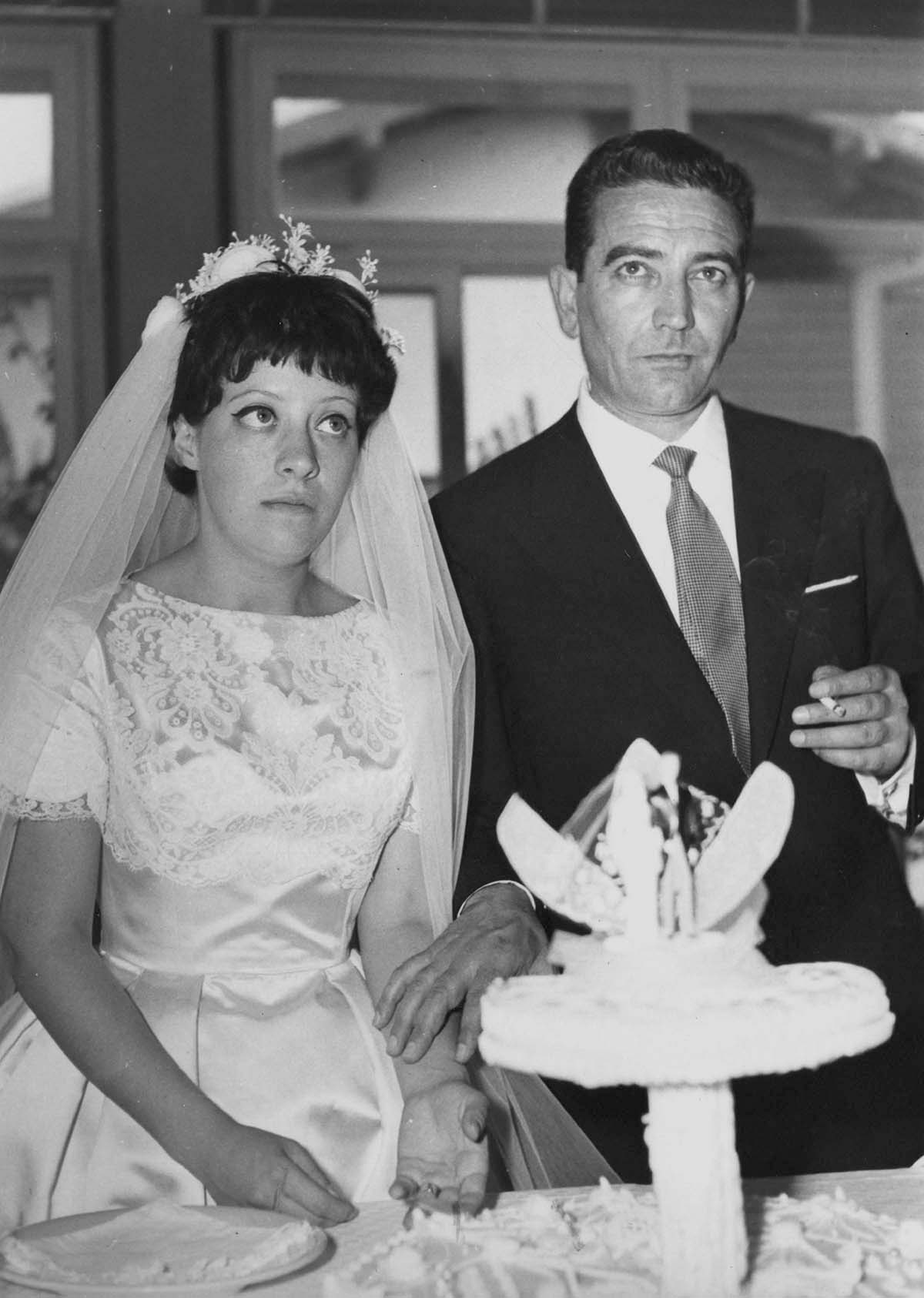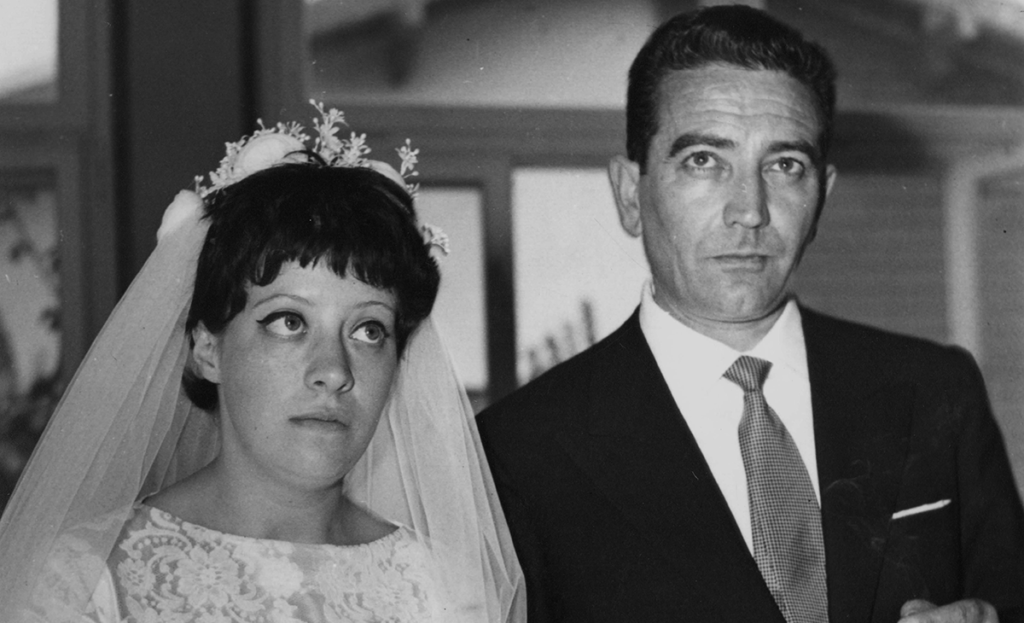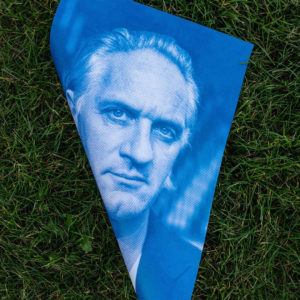The Stand-in Groom
Erik Kessels, PetriPaselli

In Italia, tra il 1945 e il 1976, oltre 12.000 donne si sposarono per procura con partner impossibilitati a essere presenti per motivi come il servizio militare, la prigionia o restrizioni di viaggio. Mina, di Bologna, fu una di loro.
Nel 1961, la ventiseienne Mina decise di sposare Dario, trasferitosi in Eritrea per lavorare come veterinario. La determinata Mina voleva essere già moglie quando sarebbe salita sull’aereo per raggiungere Dario in Africa, almeno agli occhi della legge. Così mise in scena il suo matrimonio e chiese a Franco, il migliore amico di Dario, di interpretare la parte dello sposo. Pochi giorni dopo, Mina volò in Eritrea con il suo pomposo abito bianco di pizzo avvolto in un grande sacchetto di plastica sotto il braccio. Si riunì al vero marito Dario e immortalò l’atteso momento su pellicola a colori.
In Italy, between 1945 and 1976, more than 12.000 women were married by proxy to partners who were unable to attend for reasons such as military service, imprisonment, or travel restrictions. Mina from Bologna was one of them.
In 1961, twenty-six-year-old Mina set out to marry Dario, who had moved to Eritrea to work as a veterinarian. Stubborn Mina decided that, by the time she boarded a flight to Africa to join Dario, she would already be called a wife, at least before the law. So, she staged her wedding and Dario’s best friend, Franco, to play the part of the groom. A few days after her proxy wedding, Mina flew to Eritrea with her pompous, lacy white dress wrapped in a big plastic bag under her arm. She reunited with real husband Dario and captured the awaited moment on colour film.
Erik Kessels
Artista, designer e curatore olandese, Erik Kessels colleziona fotografie che trova nei mercati delle pulci, nelle fiere, nei negozi dell’usato, ricontestualizzandole e pubblicandole con KesselsKramer Publishing. Tra i suoi lavori più famosi e importanti vi sono la rivista Useful photography e la collana In Almost Every Picture. “The Guardian” ha affermato: «È un maestro nel trovare vecchi album di famiglia, mostrandoceli sotto un nuovo volto, nella loro mondana bellezza e stranezza. È interessato dalle storie contenute nelle fotografie, piuttosto che dalle fotografie in sé». Attualmente sta lavorando ad un progetto europeo di lungo periodo intitolato Europe Archive.
Dutch artist, designer, and curator, Erik Kessels collects photographs he finds in flea markets, fairs and second-hand shops, recontextualising them and publishing them with KesselsKramer publishing. Among his most famous and important works are Useful photography magazine and In Almost Every Picture series. “The Guardian” said about Kessels: «He is a master at finding old family albums, showing them to us in a new light, in their mundane beauty and strangeness. He is interested in the stories contained in the photographs, rather than the photographs themselves». Currently he’s working on a long-term European art project called Europe Archive. Among his most famous and important works are Useful photography magazine and In Almost Every Picture series. “The Guardian” said about Kessels: «He is a master at finding old family albums, showing them to us in a new light, in their mundane beauty and strangeness. He is interested in the stories contained in the photographs, rather than the photographs themselves». Currently he’s working on a long-term European art project called Europe Archive.

PetriPaselli
PetriPaselli è un duo bolognese formato da Matteo Petri (1981) e Luciano Paselli (1983). La loro poetica è caratterizzata da un forte legame col mondo dell’infanzia e del ricordo condiviso, potenziata da un’estetica legata all’oggetto nella sua più pura concretezza. Ne deriva che il collezionismo, prima domestico poi collettivo-popolare, diviene per loro il fulcro pulsante della ricerca sia dal punto di vista estetico che concettuale, presentato attraverso un continuo cortocircuito visivo, di senso e di significato.
PetriPaselli is a duo from Bologna formed by Matteo Petri (1981) and Luciano Paselli (1983). Their poetics is characterised by a strong link with the world of childhood and shared memory, enhanced by an aesthetic linked to the object in its purest concreteness. It follows that collecting – initially domestic, then collective and popular – becomes the pulsating core of their research, both aesthetically and conceptually, conveyed through a continuous visual short-circuit of sense and meaning.


